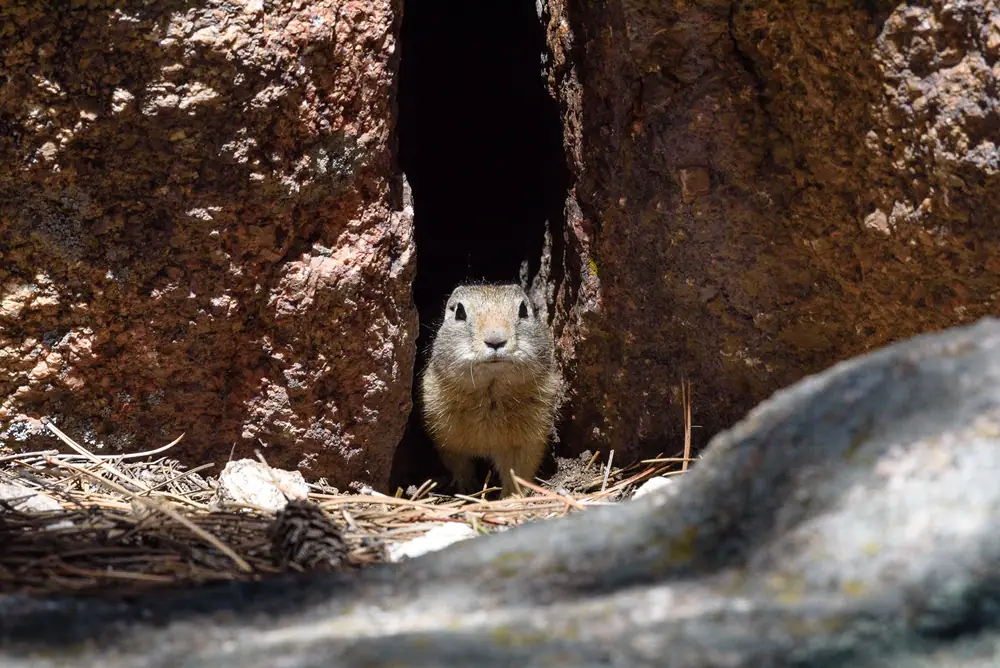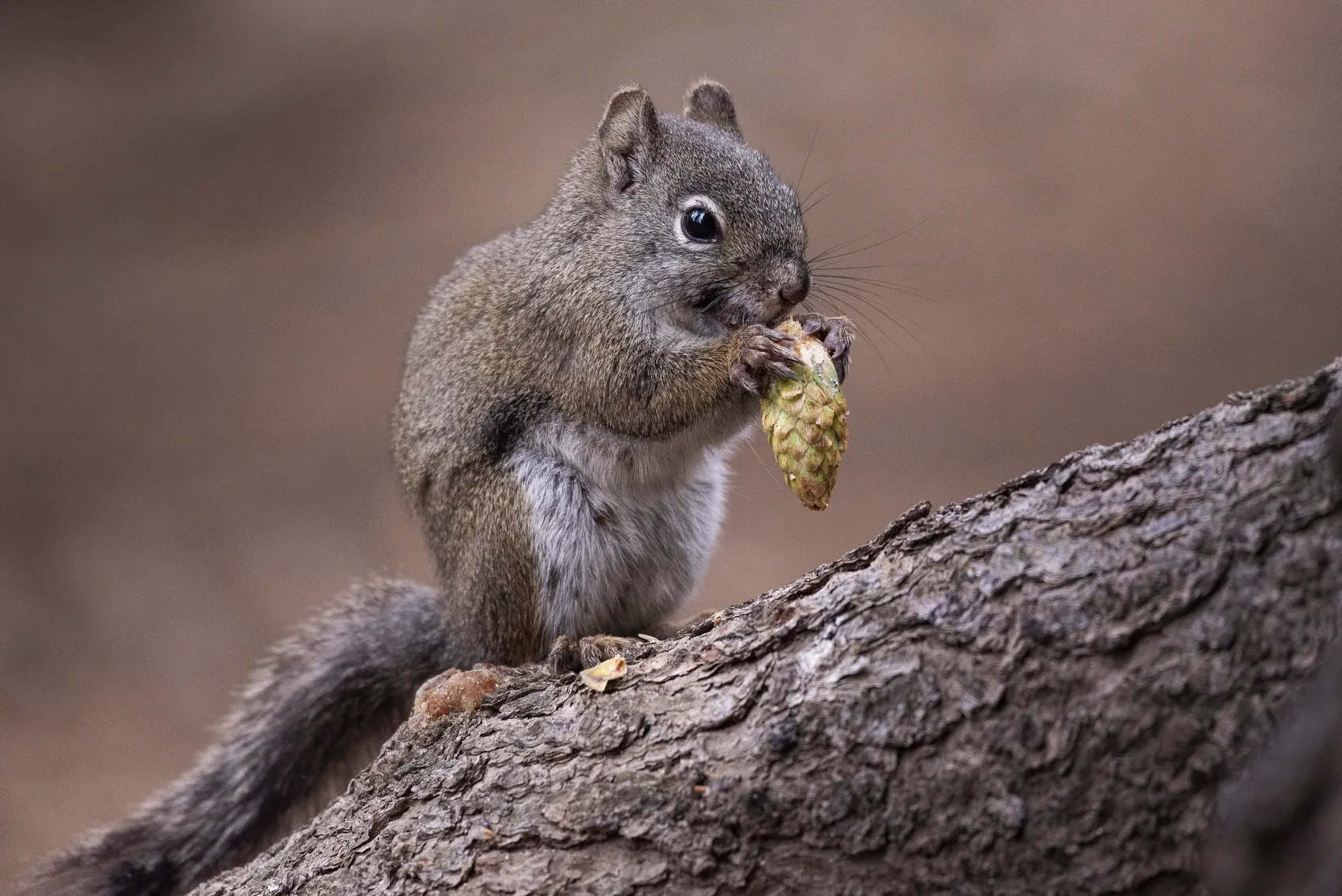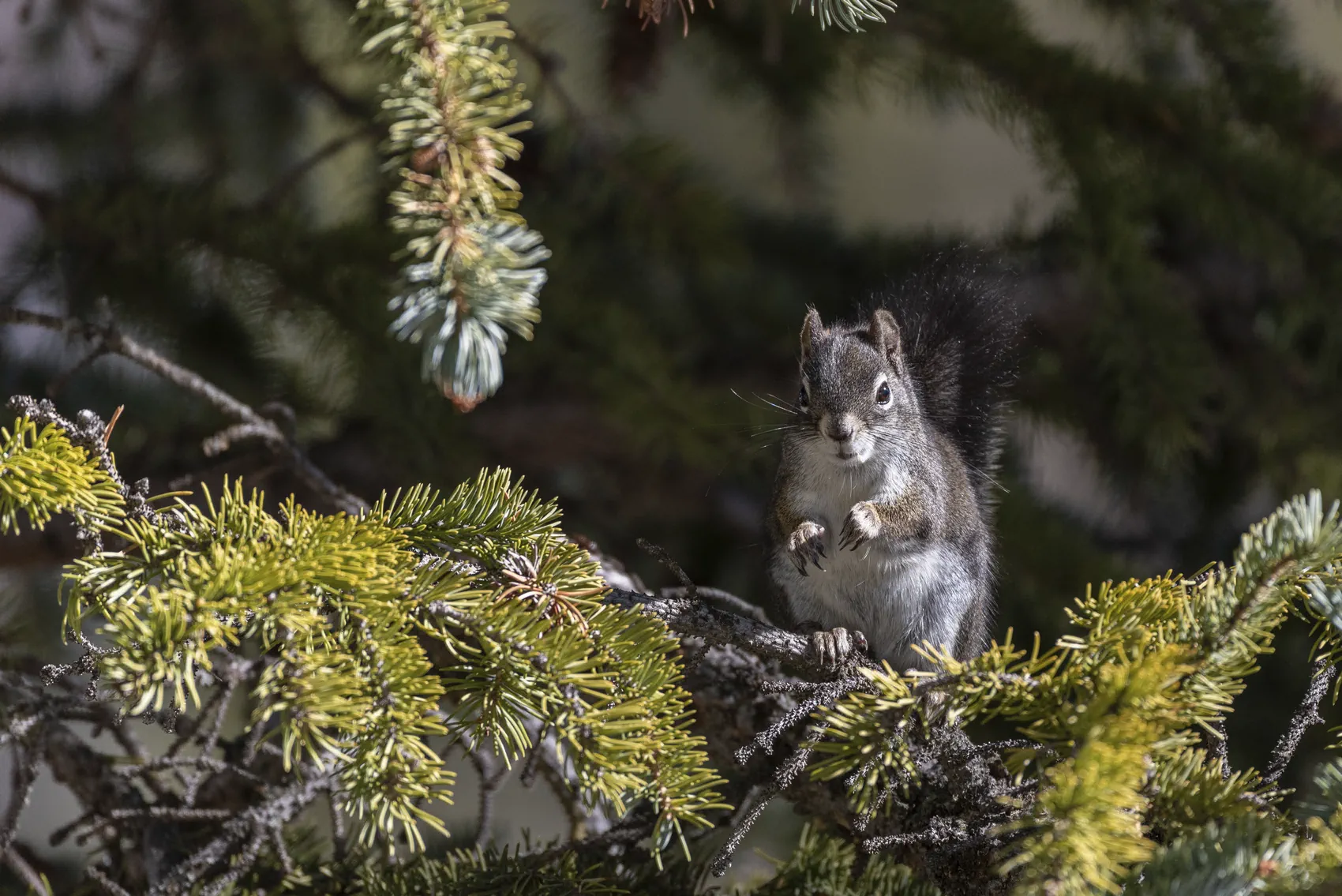No one cares about squirrels, right? I mean, how many people do you know who enjoy squirrels in a park, in the woods on a hike, or just in general? The answer is everyone — unless they’re suffering from sciurophobia (from Sciurus, the squirrel genus, + phobia, meaning “fear”) — and let’s be honest, you’ve probably never even heard of that because it’s basically a made-up word… a funny one at that. But everyone should care about squirrels, and here’s why.
Squirrels are among the most familiar mammals of Colorado and Wyoming. From red squirrels chattering in alpine spruce to fox squirrels bounding across city lawns, these rodents are more than just backyard acrobats. They help regenerate forests by caching seeds, provide prey for raptors and carnivores, and signal the health of ecosystems. But as climate change reshapes the American West, their habitats and life cycles are under pressure.
A Diverse Cast of Characters
Colorado and Wyoming host both tree squirrels and ground squirrels. In the forests of the Front Range and the Black Hills, red squirrels (Tamiasciurus hudsonicus) defend their territories with sharp trills while hoarding pine cones in middens. Abert’s squirrels (Sciurus aberti), recognizable by their tufted ears and gray or black coats, depend almost entirely on ponderosa pine forests. In cities and agricultural edges, fox squirrels (Sciurus niger) and eastern gray squirrels (Sciurus carolinensis) have adapted to human presence, feeding on crops, birdseed, and ornamental trees.
Below the treeline, the plains and sagebrush steppe belong to Wyoming ground squirrels (Urocitellus elegans), thirteen-lined ground squirrels (Ictidomys tridecemlineatus), and the striking golden-mantled ground squirrel (Callospermophilus lateralis) of the high country. White-tailed prairie dogs (Cynomys leucurus) — technically large ground squirrels — form colonies that shape grassland ecology and support predators from badgers to golden eagles.
Each species has carved out a niche tied to temperature, snowpack, and plant cycles. That makes them highly sensitive to a warming, more erratic climate.
Heat Stress and Shifting Activity
Tree squirrels maintain body temperatures only slightly above ambient air. Rising summer heat creates physiological stress, especially for Abert’s and red squirrels living at mid-elevations where heat waves are lasting longer. These squirrels normally forage in cooler mornings and evenings, but with midday heat climbing, they’re forced into longer periods of inactivity. Less foraging time means fewer cached cones and acorns — the food stores that sustain them through winter.
Ground squirrels face a different challenge: they rely on precise internal calendars to emerge from hibernation. Warmer winters can trigger earlier wake-ups, but if plants and insects haven’t emerged yet, the squirrels may starve. Conversely, an early spring followed by a sudden freeze — now more common in the Rockies — can wipe out young vegetation just as squirrels need it.
Forest Change and Cone Supply
Abert’s squirrels are a poster species for how climate change indirectly reshapes squirrel survival. They depend on ponderosa pines for nearly everything — buds, bark, seeds, and cover. But hotter, drier summers and bark beetle outbreaks have been killing ponderosa stands across Colorado’s Front Range and southern Wyoming. Where mature pines die off, Abert’s squirrels decline sharply.
Red squirrels, which hoard spruce and pine cones, are seeing similar pressure in subalpine forests. Drought stress and beetle infestations reduce cone crops, while increased fire frequency can reset decades of forest growth. These squirrels can move to adjacent healthy stands, but fragmented forests and hotter, drier slopes limit safe travel and seed availability.
Wildfire: Friend and Foe
Fire isn’t new in the West, but its scale and intensity are changing. Low-intensity burns historically created habitat diversity — clearing understory, regenerating pines, and stimulating seed production. Squirrels can often recolonize such areas. Today’s mega-fires, however, destroy seed banks, scorch soils, and leave few surviving trees. Recovery can take decades, and squirrels depending on mature cones can’t simply wait it out.
For ground squirrels, fire can temporarily increase open foraging areas, but repeated large burns combined with invasive grasses can eliminate the native seeds and insects they need.
Drying Wetlands and Alpine Shrinkage
In Wyoming’s high basins and Colorado’s alpine meadows, ground squirrels depend on lush grasses and forbs fed by late-melting snow. Warmer temperatures mean snowpacks melt sooner and summers dry out faster. Alpine zones are literally shrinking upward as tree lines move higher, leaving less habitat for cold-adapted species like the golden-mantled ground squirrel.
Prairie wetlands in both states — critical for Wyoming ground squirrels and other burrowers — are drying earlier in the season. Less water means fewer insects and softer soil, making it harder to dig safe burrows.
Predators, Parasites, and Disease
Changing climate doesn’t just affect food and cover; it shifts the entire web around squirrels. Warmer winters mean more ticks, fleas, and botflies survive. Parasite loads are increasing for both tree and ground squirrels. Some carry diseases such as tularemia or plague that can decimate colonies.
Predator dynamics are shifting, too. For example, milder winters can allow coyotes and foxes to stay active year-round, increasing predation on ground squirrels emerging early from hibernation. Raptors may benefit from open winters with less snow cover to conceal prey.
Urban Expansion Meets Climate Stress
Many squirrels thrive in cities — but even urban adaptors are facing new heat and food challenges. Urban heat islands compound warming trends, and drought-stressed trees produce fewer nuts. In towns like Fort Collins or Cheyenne, big old shade trees are dying faster, reducing canopy corridors fox and gray squirrels depend on. Landscape changes can push them toward risky crossings and vehicle collisions.
Conservation and Adaptation
Wildlife managers are watching squirrels closely because they’re sensitive climate indicators. Several measures can help:
- Maintaining forest diversity — Mixed-age stands of pine, spruce, and fir buffer against total cone failure.
- Protecting riparian zones and wet meadows — Sustains ground squirrel forage as summers dry.
- Planning prescribed burns — Lower-intensity fire can prevent catastrophic mega-fires and maintain habitat mosaics.
- Urban forestry — Planting drought-tolerant trees preserves city canopy for squirrels and other wildlife.
Backyard actions matter too: planting native seed-bearing trees, limiting pesticides that reduce insect food, and maintaining brush piles or logs can support local squirrels.
Why Squirrels Matter
Squirrels may seem abundant, but their decline would ripple widely. Abert’s and red squirrels shape forest composition through seed caching; ground squirrels aerate soils and feed raptors, coyotes, and weasels. Their presence (or sudden absence) often signals bigger shifts in mountain and plains ecosystems.
References and research
- Colorado Parks & Wildlife – Mammals of Colorado
- Wyoming Wildlife Federation – Wildlife & Habitat
- US Forest Service Rocky Mountain Research Station – Forest Health & Climate
- National Park Service – Red Squirrel Ecology
- Impacts of Climate Change on Small Mammal Activity Patterns (Global Ecology & Conservation)
- Frontiers in Ecology & Evolution – Mammals as Climate Indicators
- US Forest Service Climate Change Resource Center – Wildlife Responses
- National Geographic – Squirrel Species Overview
- Journal of Mammalogy – Tree Squirrel Habitat and Forest Dynamics
- NASA Climate Change – Effects on Wildlife and Ecosystems











